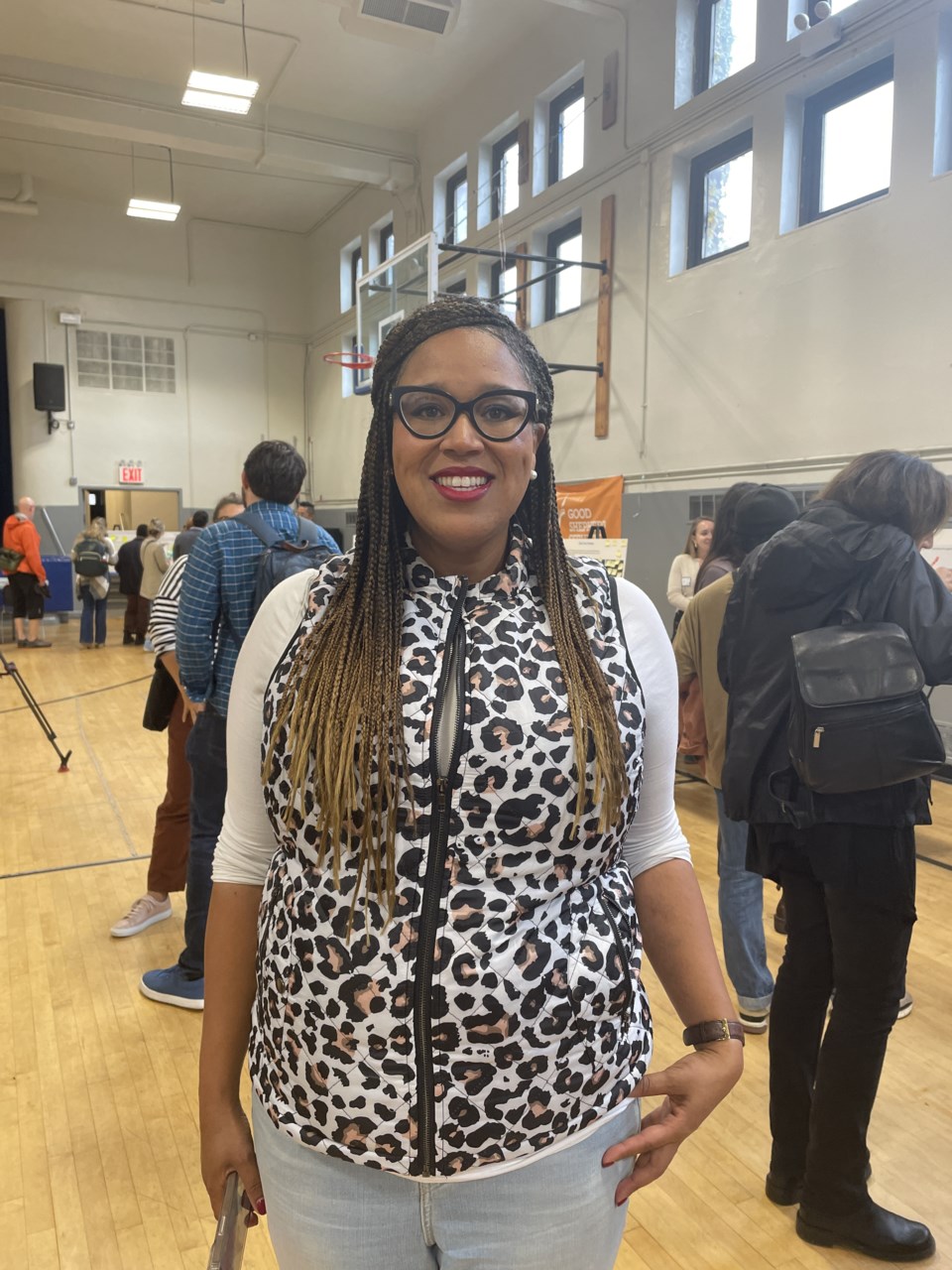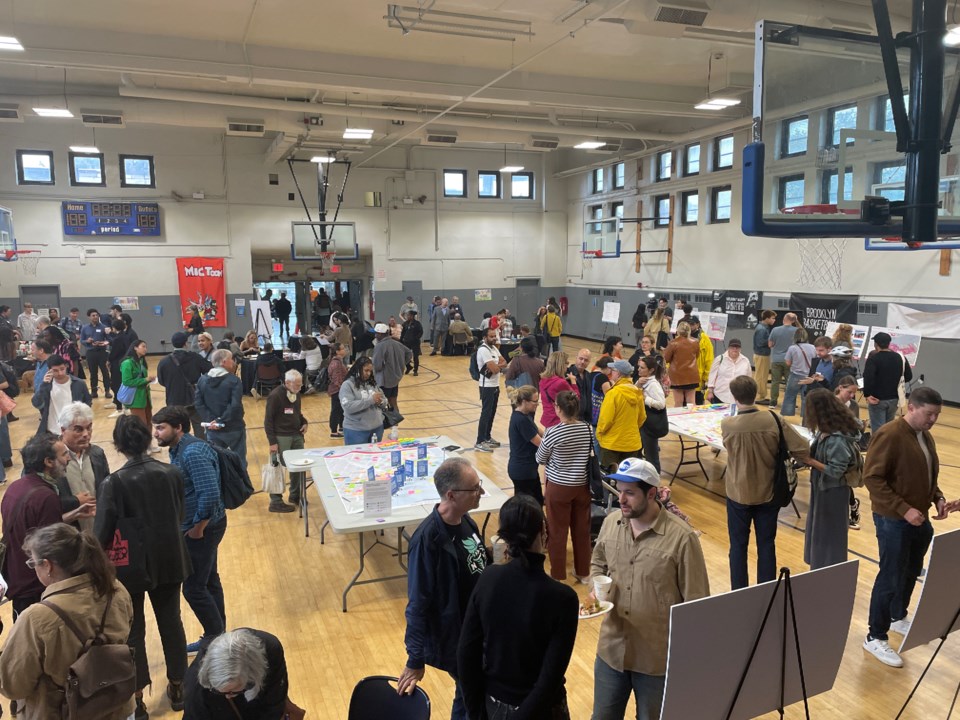The first of several community planning workshops on the future of the Brooklyn Marine Terminal occurred on Saturday, where residents chimed in on the multi-million dollar rebuild that looks to build a modern port and a mixed-use community on the Red Hook waterfront.
The New York City Economic Development Corporation (EDC), Mayor Eric Adams and Governor Kathy Hochul in May announced the revitalization plan for the 122-acre industrial space that stretches from 29th to 39th Streets. The project, overseen by the EDC, will rebuild the waterfront area into a modern maritime port, add a mixed-use community and repair Piers 7-12.
So far, the project has secured a $164 million grant from the Department of Transportation matched by another $95 million from the city and state, according to the EDC.

Mikelle Adgate, EDC senior vice president of Government and Community Relations, said the city’s Blue Highways proposal incentivizes shipping companies to utilize barges instead of using trucks.
Jim Wright, an architect based in Manhattan, said the proposal sounded like it would create a robust, interconnected freight network.
“This site has the potential to be the port of the future for New York City,” Wright said.
Wright stressed that food could be a major product that can be transported from the new marine terminal. The architect mentioned that Hunt’s Point, the city’s biggest food distribution point, did not currently utilize maritime shipping methods.
Wright added that the city could cut down on truck traffic by utilizing maritime shipping from Hunt’s Point to “secondary centers” along the Blue Highway to bring food “closer to the final market.”
Meanwhile, another aspect of the project proposal is to build a mixed-use community which could including residential units. Adgate said housing is “one of the opportunities that could be” incorporated as part of the project, but so far, “no decisions have been made.”
George Ostrow, a resident of Red Hook, was concerned that the EDC’s housing proposals “will focus on whatever makes the most money.”
“You’re going to make a huge investment, they are going to have to get their money back from it,” Ostrow said, referring to the city and a housing developer. “And if their analysis says luxury condos, waterfront condos, like you see up river, then that’s what we are going to get—it doesn’t matter what the people say.”
Cobble Hill resident Amy Breedlove said any new housing to be built should be supportive housing, or for those who are homeless and/or were formerly incarcerated, not luxury condominium units.
Ostrow said he was “cynical” of public input sessions like this.
“This is just a very token, check the box, ‘Yeah, we had a public input session,’ but it’s not going to mean anything at all,” he said.
Adgate disagreed with Ostrow’s assessment, contending that it is “absolutely critical” to have community input.
“All of these stakeholders can come and learn more about this site that they may have not had access to in the past,” Adgate said.

Trequan Bekka, the internship coordinator for the nonprofit Good Shepherd Services, said he hoped the poject would provide opportunities to connect high school studdents and recent graduates with job training and services.
“I think it’s very important that when we have opportunities like this, as big as this, that we use it to capitalize on progressing communities that may have struggled with poverty,” Bekka said.
Breedlove also said rising sea levels were concerning, and how it would impact the fixing of the terminal’s piers.
The EDC will hold their next public workshop on Oct. 7 at Sacred Hearts and St. Stephens Parish, 125 Summit St., at 6:00pm.
More information on the project can be found on the EDC’s website here.




